Watch & Listen
Angela Hewitt Plays Bach
When:
Thursday, November 12, 7:30 pm (Premiere at victoriasymphony.ca)
Program:
J.S. Bach – Keyboard Concerto in D minor (BWV 1052)
Allegro
Adagio
Allegro
J.S. Bach – Jesu Joy of Man’s Desiring (Chorale from Cantata 147) (arr. Hess)
Grieg – Holberg Suite
Praeludium
Sarabande
Gavotte
Air
Rigaudon
 Soloist and Leader
Soloist and Leader
Angela Hewitt Angela Hewitt occupies a unique position among today’s leading pianists. With a wide-ranging repertoire and frequent appearances in recital and with orchestras throughout Europe, the Americas and Asia, she is also an award-winning recording artist whose performances of Bach have established her as one of the composer’s foremost interpreters. In 2020 she received the City of Leipzig Medal: a huge honour that for the first time in its 17-year history will be awarded to a woman.
In September 2016, Angela began her “Bach Odyssey”, performing the complete keyboard works of Bach in a series of 12 recitals. The cycle was presented in London’s Wigmore Hall, New York’s 92nd Street Y, and in Ottawa, Tokyo and Florence. After her performances of the complete Well-Tempered Clavier at the 2019 Edinburgh Festival, the critic of the London Times wrote, “…the freshness of Hewitt’s playing made it sound as though no one had played this music before.”
Hewitt’s award-winning cycle for Hyperion Records of all the major keyboard works of Bach has been described as “one of the record glories of our age” (The Sunday Times). Her discography also includes albums of Couperin, Rameau, Mozart, Beethoven, Chopin, Schumann, Liszt, Fauré, Debussy, Chabrier, Ravel, Messiaen and Granados. Her second disc of Scarlatti Sonatas (2017), the penultimate volume of Beethoven Sonatas (2019) and her second recording of Bach’s Six Partitas (2019), all hit the Billboard charts in the USA. An album of Beethoven Variations will be released in autumn 2020. In 2015 she was inducted into Gramophone Magazine’s “Hall of Fame” thanks to her popularity with music lovers around the world.
Conducting from the keyboard, Angela has worked with many of the world’s best chamber orchestras, including those of Salzburg, Zurich, Lucerne, Basel, Stuttgart, Sweden, and the Britten Sinfonia. One recent highlight was her debut in Vienna’s Musikverein, playing and conducting Bach Concertos with the Vienna Tonkünstler Orchestra.
Her frequent masterclasses are hugely appreciated. When all concert activity abruptly stopped in spring 2020 due to the pandemic, Angela went online to share daily offerings of short pieces—many of which form the basis of teaching material. Her fans were thrilled, and she was happy to inspire them and stay in touch.
Born into a musical family, Hewitt began her piano studies aged three, performing in public at four and a year later winning her first scholarship. She studied with Jean-Paul Sévilla at the University of Ottawa, and won the 1985 Toronto International Bach Piano Competition which launched her career. In 2018 Angela received the Governor General’s Lifetime Achievement Award, and in 2015 she received the highest honour from her native country – becoming a Companion of the Order of Canada (which is given to only 165 living Canadians at any one time). In 2006 she was awarded an OBE from Queen Elizabeth II. She is a member of the Royal Society of Canada, has seven honorary doctorates, and is a Visiting Fellow of Peterhouse College in Cambridge. In 2020 it was announced that Angela would be awarded the Wigmore Medal in recognition of her services to music and relationship with the hall over 35 years.
Hewitt lives in London but also has homes in Ottawa and Umbria, Italy where fifteen years ago she founded the Trasimeno Music Festival – a week-long annual event which draws an audience from all over the world.
Victoria Symphony Music Director, Christian Kluxen
Angela Hewitt, Soloist and Leader
Terence Tam, Leader and Concertmaster
Violin
Christi Meyers, Assistant Concertmaster
Tori Gould, Principal 2nd Violin
Cory Balzer
Müge Büyükçelen
Courtney Cameron
Michele Kwon
Philip Manning
Emily Salmon
Julian Vitek
Viola
Kenji Fuse, Principal
Stacey Boal
Kay Cochran
Mieka Michaux
Christine Prince
Cello
Brian Yoon, Principal
Hannah Craig
Joyce Ellwood
Perry Foster
Bass
Mary Rannie, Principal
Darren Buhr
Alex Olson
Operations Manager
Liz King
Acting Orchestra Manager
Peter Burris
Librarian
Christopher Reiche Boucher
‘Jesu, Joy of Man’s Desiring’ (‘Cantate 147’) by J. S. Bach, arranged for piano solo by Myra Hess (1890-1965) © Oxford University Press 1926. Licensed by Oxford University Press. All rights reserved.
© Angela Hewitt, Hyperion Records
Keyboard Concerto #1 in D minor, BWV 1052
Johann Sebastian Bach (1685 – 1750)
For a decade of his time in Leipzig, from 1729 to 1739, Johann Sebastian Bach was director of the Collegium Musicum, a society founded some years earlier by his fellow composer George Philipp Telemann. It consisted of a talented group of university music students, probably augmented by professionals when needed. Their concerts took place in the popular surroundings of Zimmerman’s Coffee House, where people came together to smoke, drink and listen to pleasant music. In summer, they played outdoors. These informal concerts must have been a welcome relief for Bach from the endless problems of his work as director of music and head of the choir school at St. Thomas’s Church. They also afforded him the opportunity to compose many secular instrumental works, including the seven keyboard concertos, of which this is the first.
It is said that if one tried to sit down and copy out all the music Bach wrote, it would take a lifetime. Yet he was composing it, as well! So it’s no wonder that from time to time he borrowed from himself. Such is the case with the keyboard concertos. In some cases, we have the original version, in others it is lost, but can be inferred. This recycling is one of the reasons I defend the performance of Bach on the modern piano. If he could write for violin, oboe or voice a singing melodic line with natural inflections, phrasing, rise and fall, surely he would have wanted to hear it on a keyboard instrument capable of doing the same thing – which the harpsichord of his own day could not. In the case of this D minor concerto, the original version is without doubt a lost violin concerto, as so much of the solo writing is characteristic of that instrument. Musicologists continue to debate whether the original concerto was actually written by Bach or someone else. I cannot think of another composer who could even come close to the amazing intensity and scope of this piece, its dramatic and emotional impact.
This is the most famous and powerful of Bach’s seven keyboard concertos. The opening tutti, with its unison writing, announces something very special and different. This theme reappears throughout the first movement, punctuating the soloist’s various excursions. The most dramatic moment comes with a brief keyboard solo, taking off over a long, sustained pedal note in the bass. The second movement Adagio also begins with a unison tutti – this time a ground bass, which is present in every bar, modulating to different keys and sometimes fragmented. The soloist is given an impassioned aria, and engages in dialogue with the violins and violas. The whole is totally reminiscent of Bach’s Passion music. The third movement is the most brilliant finale of all the concertos, not letting up for a moment, and demands the utmost in rhythmic precision and virtuosity from soloist and orchestra alike.
I have played this concerto many times over my career and never tire of it, always discovering something new each time. However, these days I insist on only performing it as we are doing here in Victoria: with myself directing from the keyboard, and a relatively small number of strings, so that we can capture the chamber music feel of this music – perhaps something like it first sounded at Zimmerman’s Coffee House in Leipzig almost three centuries ago!
Jesu, joy of man’s desiring from Cantata #147, BWV 147
Johann Sebastian Bach (1685 – 1750), arranged by Myra Hess (1890 – 1965)
My recording of Bach arrangements and transcriptions was made twenty years ago, but remains one of my most popular releases. I dedicated it to my late father Godfrey, an organist and choirmaster, who introduced me to the music of Bach in a way nobody else could have done. Of course, organists like Bach, and countless others before and after him, were and are familiar with the process of arranging and improvising on familiar melodies. My father was still alive when I was planning the CD, and personally selected three chorale preludes which I transcribed myself for the project, alongside others by various composers and performers.
“Jesu, joy of man’s desiring” is the last movement from Bach’s Cantata #147 (Heart and Mouth and Deed and Life), where it is sung by the chorus with trumpet doubling the melody. Strings and continuo provide the accompaniment, with oboes joining the violins for the triplets. Capturing all that at the keyboard – and even more so, translating spirituality into sound – is challenging but necessary. The rise and fall in dynamic level mirrors the words (in Robert Bridges’s translation): “Jesu, joy of man’s desiring, holy wisdom, love most bright . . . striving still to truth unknown, soaring, dying round thy throne.”
Dame[1] Myra Hess’s transcription of “Jesu, joy of man’s desiring” brought Bach to the masses during the Second World War, and became her instantly recognizable signature piece. Her famous and beloved lunchtime concerts, broadcast live from the National Gallery in London while the bombs of the blitz fell all around, were designed to boost morale, and people still talk of them today. She organized almost two thousand such programs over six years, and played in about 150 of them herself. As she recalled later of that time, “Never have I practised so little and played so much!”
We, too, are living through a period when everyone is seeking the kind of solace that only great music and great art can provide, and yet when live performance opportunities are understandably curtailed. I was bowled over by the size and intensity of the response to the short daily solo pieces I sent out from my London flat during the early days of the lockdown via Twitter (maximum allowable duration two minutes and twenty seconds!). It has been a gift to come and play for you here in Victoria at this time, with the wonderful musicians of the Victoria Symphony. It’s in the spirit, not only of Myra Hess, but of all music-makers past and present who seek to keep our spirits high and full in circumstances of adversity, that I offer this encore.
[1] The “Dame” signifies her membership in the second highest level of the Order of the British Empire, to which I also have the signal honour of belonging, albeit at an appropriately less exalted status.
Written by Kimberley Manerikar
Holberg Suite
Edvard Grieg (1843-1907)
In the summer of 1884, upon returning to his family and reconciling with his wife after a period of travel and estrangement, Edvard Grieg set to work composing two commissions for the 200th anniversary celebration of the birth of humanist playwright and philosopher Ludvig Holberg.
Grieg, whose use of Norwegian folk music would help to create a sense of national identity and garner recognition for the music of Norway on an international scale, was seemingly the perfect composer to pay tribute to Holberg. Also a groundbreaking figure, Holberg is recognized as the founder of modern Danish and Norwegian literature.
Grieg’s contributions consisted of a cantata for male voices and the suite Fra Holbergs tid (‘From Holberg’s Time’) popularly known as his ‘Holberg Suite.’ The suite was originally written for piano and subsequently adapted for string orchestra.
With movements modelled after 18th century dance forms, this work borrows its structure from the time of Holberg (whose dates closely mirror those of J.S. Bach) while its rich sonorities and harmonic language lend a strong flavour of romanticism.
The opening Praeludium establishes a celebratory mood with its galloping rhythms, graceful figures and grand chorales. The second movement Sarabande follows with a much more inward character; tuneful and sweet, punctuated by occasional moments of brilliance. The Gavotte, a light and elegant folk dance containing its own musette, resonates with accordion-like drones in the low strings and is tempered by the ensuing fourth movement, Air, the most song-like movement—heartfelt, and at times pleading. Grieg rounds out the suite with a final Rigaudon; an energetic dance resounding with sharp clarity and abundant joy.
The Victoria Symphony would like to thank the following sponsors and Government funders for their support during our 2020/21 Virtual Season.
Platinum Sponsors:

Butler Brothers Supplies, Ltd.
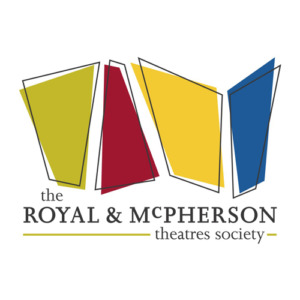
Royal MacPherson Theatres Society

Chateau Victoria Hotel & Suites
Silver Sponsors:

Island Savings Wealth Management

MET Fine Printers

Horne Coupar LLP

Long & McQuade
Media Sponsors:

CFAX 1070 Radio

CTV Vancouver Island

Virgin Radio

Times Colonist

used.ca

Fine Floral Designs

KPMG

LA Limousines

Lighthouse Brewing Co.

Tom Lee Music

Rogers’ Chocolates

Royal MacPherson Theatres Society

Odlum Brown Limited
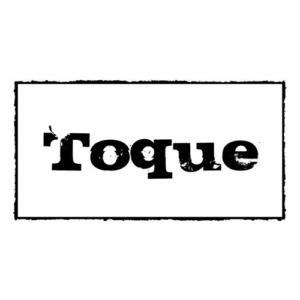
Toque Catering

Vessel Liquor Store
Government Funders & Foundations:
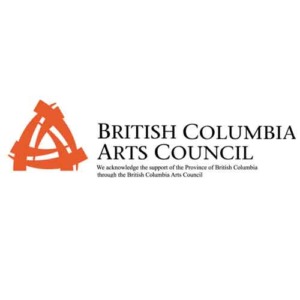
BC Arts Council
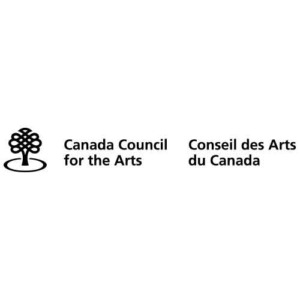
Canada Council for the Arts

Canadian Heritage
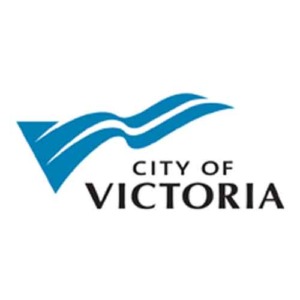
City of Victoria

CRD

Province of British Columbia
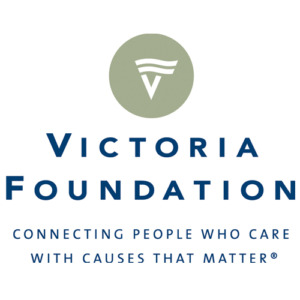
Victoria Foundation
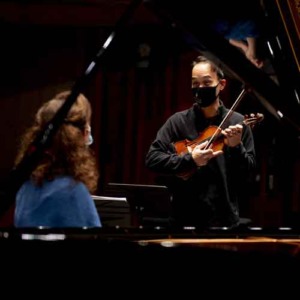
Angela Hewitt and Terence Tam talking about the program.
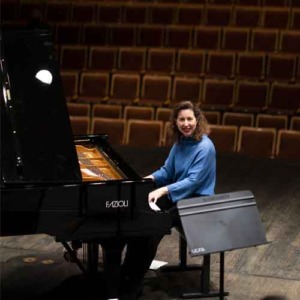
Angela Hewitt smiles for the camera.
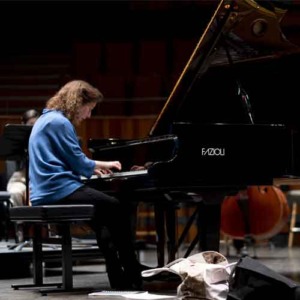
Angela Hewitt rehearses.
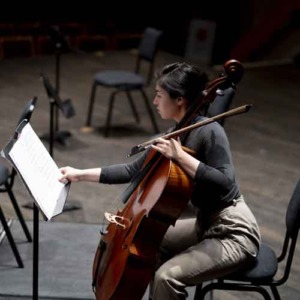
Cellist Hannah Craig.
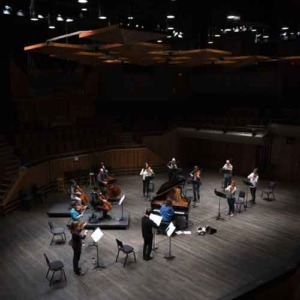
Victoria Symphony musicians.











































